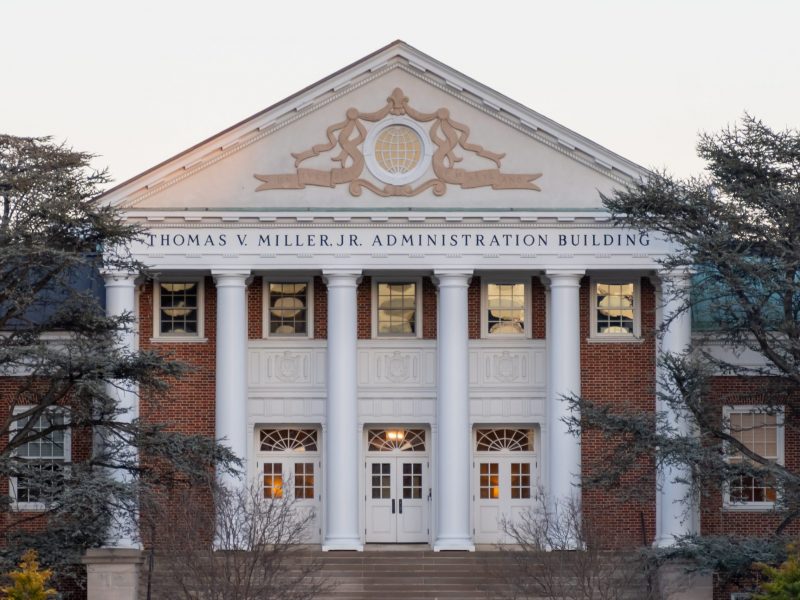
Maryland alumnus and senior National Geographic photographer Emory Kristof uses robots in his deep-sea photos. Submersible mini-subs such as the one in the photo allowed Kristof to be the first person to photograph the wreakage of the Titanic.
To his bosses, longtime National Geographic photographer Emory Kristof is an ingenious and risk-taking photojournalist who made a name for himself when he took the first underwater pictures of the RMS Titanic in history. To his wife, Kristof is a dependable family man and committed husband of 38 years.
But to his co-workers, the groundbreaking photographer is an adventure-loving pirate who feels more at home under the water than above the surface. Kristof, who has worked as a National Geographic photographer since 1964, has made a name for himself for his elegant and detailed pictures of never-before photographed subjects, such as deep-sea life and underwater ship wrecks, is a trailblazer among photojournalists for his use of high-definition technology and remotely operated vehicles, or ROVs.
Though Kristof was hired by National Geographic at the tender age of 21, his passion for pictures began right on the campus as a football photographer for The Diamondback, the editor in chief of the Terrapin yearbook and one of the masterminds behind Old Line, a humor magazine that was kicked off the campus in 1962 thanks to Kristof’s antics.
Kristof entered the university in 1960 after applying with the $15 he made from selling one of his first photographs to The Washington Star, a defunct local paper. He discovered his passion while working on his high school yearbook.
“It was like nothing I’d ever done, and I loved it,” Kristof said. “I decided I wanted to be a photographer, which is kind of like telling your parents you want to be a rock star.”
Nevertheless, Kristof’s work – especially aerials of the campus Kristof took while only in his fourth week of his freshman year – got him noticed by journalism professors, specifically James “Jimmy” Bedford. Bedford encouraged his student to take risks with his photos – which is exactly what Kristof did when he photographed students dancing, studying and even tapping a keg underwater in the girls’ swimming pool for Old Line magazine.
“The lower campus used to flood every year – it probably still does – and I did this thing on how to dive to survive,” Kristof explained.
When the paper from the books Kristof used as props clogged the filters of the pool, the administration cut funding for and circulation of the magazine, Kristof said.
Undeterred, Kristof transformed the Terrapin from a subpar publication to an All-American in two years by incorporating a picture story layout and adding whole sections of color photographs, a new technique for college yearbooks, he said.
“This wasn’t brain surgery, but it had never been done,” he said.
Soon after graduation he would be the youngest staff photographer to be hired in National Geographic’s history.
“They’ve paid for the world’s most expensive education – mine!” Kristof joked.
Now, 33 years later, Kristof is the last contract photographer left with the magazine. The stories he’s depicted are varied and diverse, have sent him around the world countless times – a map in his overcrowded office has dozens of blue thumbtacks marking every location he’s visited, but Kristof stopped years ago when the map became too cluttered – and have earned him four covers and 40 master photographic credits in National Geographic.
Kristof’s favorite story was one at the beginning of his career, when he covered the Inuit community of Alaska in “The Last U.S. Whale Hunters” in the March 1973 issue. For years, Kristof lived with the Eskimos and accompanied them on their six-week quest while they traveled in small boats, armed themselves with spears and endured freezing temperatures. His stark photographs – of the barren, blindingly white landscape, of young Inuit men brandishing weapons on the icy waters and of the bloody snow covered in tons of whale meat and blubber – are some of his favorites because he feels he was able to capture the spirit of the community, he said.
“It was kind of a bittersweet story,” Kristof said. “They lived … on the roughest terrain on the planet, and the only thing they did as a group was whale hunting. The scary thing was, after this story, people came up to me and said, ‘How can I join a whaling club?'”
Kristof also photographed the wildlife of Tanzania in 1975, explore the legend of the Loch Ness in 1977 and become famous for his outstanding pictures of ship wrecks around the world and sharks at 2,000 feet. Since then, Kristof has photographed wildlife at depths up to 17,000 feet, using cameras decked out with toy truck parts or encapsulated in small submarines.
During expeditions, Kristof sits on a ship thousands of feet above the water, maneuvering the cameras and waiting for hours for the perfect shot. His team’s masterful use of ROVS earned them the name “The Nintendo Divers” from a group of French divers they were working with.
Kristof finally completed his “longtime dream” September 1985, becoming the first person to photograph the sunken RMS Titanic. His blue, gray and gold pictures are darkly eerie and hauntingly beautiful – capturing the tragic spirit of the Titanic.
His pictures would spread across the globe, earning him awards and – to the glee of 12-year-old girls worldwide – partly inspiring James Cameron to create Titanic.
“He really showed us how to make money off the Titanic – $2 billion!” Kristof said.
For Diana Kristof, his wife of 38 years, the Titanic discovery marked a turning point in their married life. The couple rarely communicated when Emory was on assignment, but she recieved an unexpected call while he was exploring the Titanic wreckage.
“He’d been stuck under … the Titanic,” she said. “He really thought he wasn’t going to come back.”
Since then, Kristof has “really shifted” and become more of a family man, even though he sometimes leaves for projects that take six months at a time, Diana said.
Since 1985, Kristof has continued to produce more groundbreaking work for National Geographic. He has photographed the 16th century shipwreck the San Diego off the coast of the Philippines and the U.S.S. Arizona at Pearl Harbor.
For this self-proclaimed “ultimate niche photographer,” the future holds even more excitement and adventures – at the age of 63, Kristof sees no end in sight yet, he said.
“It has been a very interesting and fulfilling way to pass the time,” he said. “I’m happy being on a ship six months of the year, running my robots, taking my pictures. Just give me 75 percent of the planet, and I’ll get up and have at it.”
Contact reporter Roxana Hadadi at roxanadbk@gmail.com.


